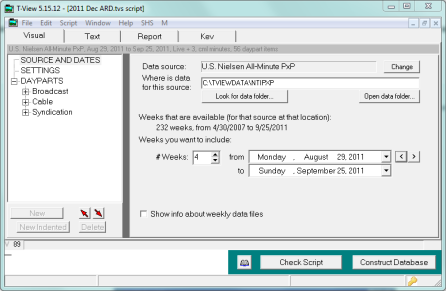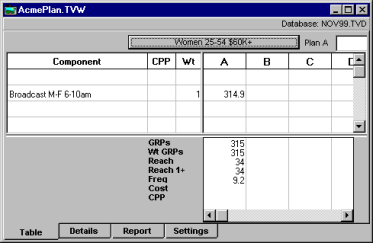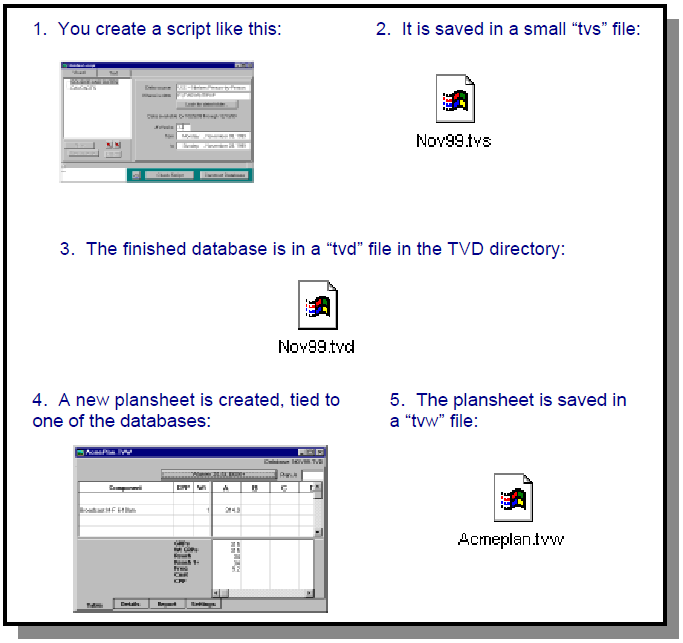Scripts, Databases and Plansheets
Note!
Understanding the relationship between scripts, weekly data files, databases and plansheets is very important!
To make best use of TView, be sure that you understand this section. |
Creating Your Own New Databases
What is "prime time"? The traditional definition used for broadcast networks is, "8 pm to 11 pm every day, with an extra 7-8 pm hour on Sunday." But that may not be correct for all Spanish networks, and most certainly not for cable networks. And maybe you want "Prime" to only be weekdays, or only weekends, or maybe start later in the evening.
In TView, you give your own meanings to dayparts, and can create other groupings to fit your needs. We call a completed description of what is to be done a "script." It's called that because it is a set of instructions that tell TView what dayparts you might be considering.
The script tells TView how to create the new database. After you have created a script, you construct a new database using that script.
Thereafter, when you start a new television plansheet, you will see that there is a new database choice!
What is a Script?
A script is your set of instructions on how a database is to be constructed. A script is created within TView, using a special form that looks like this:

When you save a script, you are saving these instructions. The file that is created is called a script file, and it has an extension of ".tvs", for "television script". As a rule, a script file is a very small file, since it only needs to contain the instructions, and has no demographic or viewing data.
What is a Weekly Data File?
The audience research supplier, such as Nielsen, BBM or IBOPE, sends us regular updates on the demographics of their research panel, on on all of their viewing. From these updates, we prepare weekly data files, which have the extension ".DAT". As more weeks of information are provided, we place them on our website. From there your IT folks download them and add them to the weekly files you already have.
What is a TVD Database?
A television database is a very large file, containing full information on the homes and people in a sample, as well as their viewing to a number of networks (or stations) on a number of dayparts or other components.
You will use TView to construct a new database, using the instructions that you have prepared in a script file. To do this, you click on the "Construct Database" button on the script window. TView reads the instructions in the script file, and then pulls out the needed data from the weekly data files in order to construct the database file.
After they are constructed, database files have the file extension ".tvd", for "television database".
What is a Plansheet?
A plansheet is where the real planning work is done. You start a new plansheet when you want to analyze the delivery of proposed plans.
The main view in a plansheet looks something like this:

When you start a new plansheet, you need to tell TView what TVD database it will use. As the plansheet is developed, it draws its demographic and viewing information from that TVD database.
The database used by a plansheet is shown near the upper left corner of the form:
![]()
Overview: Scripts, Databases and Plansheets

Important Tips About Scripts
| • | Note that the script file is saved separately from the database it creates. |
| • | The script file is very small, the database it creates is typically large. |
| • | You do not have to create a new database just to start a new plansheet! Simply select "New Plansheet" from the File menu and choose an existing database. You may find that this is sufficient for most (and perhaps all) of your planning needs. |
